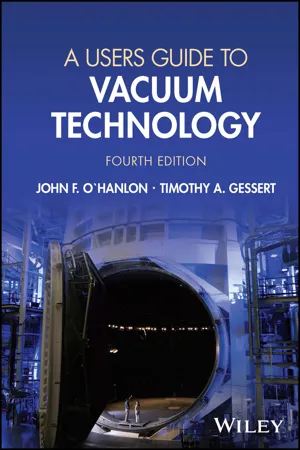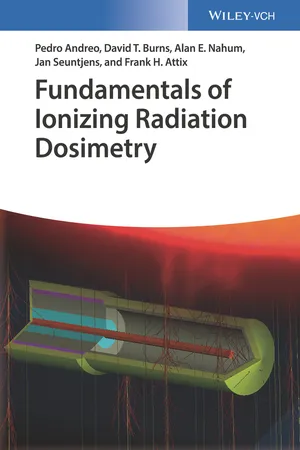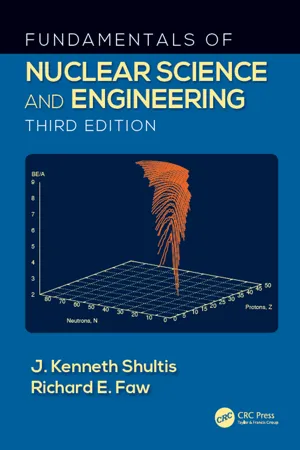Physics
Ionization Gauge
An ionization gauge is a device used to measure the pressure of a gas by measuring the current produced when gas molecules are ionized within the gauge. It operates by applying a high voltage to a metal electrode, causing gas molecules to ionize and produce a measurable current. Ionization gauges are commonly used in vacuum systems to monitor and control gas pressure.
Written by Perlego with AI-assistance
Related key terms
Related key terms
1 of 4
Related key terms
1 of 3
3 Key excerpts on "Ionization Gauge"
- eBook - ePub
- John F. O'Hanlon, Timothy A. Gessert(Authors)
- 2023(Publication Date)
- Wiley(Publisher)
[31] ; it can measure pressures of ~1000 Pa (10 Torr) with less accuracy.The spinning rotor gauge is an excellent instrument when used by a trained operator in a laboratory setting. It is the instrument of choice for calibrating other indirect gauges within its pressure range; it can be used by a skilled operator to identify gas mixture problems.5.2.3 Ionization Gauges
In the high and ultrahigh vacuum region, where the particle density is extremely small it is not possible, except in specialized laboratory situations, to detect the minute forces that result from the direct transfer of momentum or energy between the gas and a solid wall. For example, at a pressure of 10−8 Pa the particle density is only 2.4 × 1012 /m3 . This may be compared with a density of 3 × 1022 /m3 at 300 K, which is required to raise a column of mercury 1 mm. Even a capacitance manometer cannot detect pressures lower than 10−4 Pa.In the region below 10−3 Pa, pressure is measured by ionizing gases, then counting and amplifying the ion signal. Each Ionization Gauge has its own lower pressure limit at which the ionized particle current is equal to a residual or background current. Ionization Gauges normally used in the high vacuum region have a background limit of ~10−8 Pa (10−10 Torr). Both hot and cold cathode gauges have been developed for pressure measurement. Each technique has its own operating range, advantages, and disadvantages.5.2.3.1 Hot Cathode Gauges
The operation of the ion gauge is based on electron impact ionization. The ionized molecular current to the collector electrode is proportional to pressure, provided that all other parameters, including temperature, are held constant. The number of positive ions formed is actually proportional to the number density, not the pressure; the ion gauge is not a true pressure measuring instrument, but rather it is a particle‐density gauge. Its reading is proportional to pressure only when the temperature is constant. - eBook - ePub
- Pedro Andreo, David T. Burns, Alan E. Nahum, Jan Seuntjens, Frank Herbert Attix(Authors)
- 2017(Publication Date)
- Wiley-VCH(Publisher)
Chapter 12 Ionization Chambers12.1 Introduction
In this chapter, we consider the instrument type most commonly used to measure radiation, the ionization chamber. The general principle of operation is the following. Radiation enters the chamber and interacts with the sensitive material to produce secondary charge; this charge is swept in an applied electric field to a collector, where it is measured as electrical charge or current.Many types of ionization chamber are in use, the choice depending on a number of factors such as radiation type, energy, required accuracy and stability, spatial resolution, robustness, and ease of use. This chapter considers only gas-filled chambers, normally air-filled and open to the atmosphere. Liquid-filled ionization chambers (LICs) have been developed and are used for particular applications, notably for the dosimetry of small radiation fields; these are discussed in Chapter 16 .The equipment used to measure the charge, referred to as an electrometer, depends on the application. For the most accurate applications at primary standards laboratories, the accumulated charge in a calibrated capacitor is measured as a current with a resolution at the level of to amperes. When the measured current is low, an important consideration is the minimization of leakage currents, which has consequences for the design of ionization chambers and electrometers.For air ionization chambers that are open to the atmosphere, the measured current depends on the air density and water vapor content. Reference conditions of air temperature, pressure, and relative humidity are normally chosen and the measured current must be normalized to take into account the actual air density at the time of measurement. Other parameters that directly influence the measured current are the polarizing potential applied to produce the required electric field, which has an influence on the recombination of ions, and the polarity (positive or negative) of this potential. The correction for these effects (temperature, pressure, humidity, ion recombination, and polarity) is referred to as the correction for influence quantities. Of course, the measured current is also influenced by factors such as distance from the radiation source and field size. In this chapter, the term influence quantities - eBook - ePub
- J. Kenneth Shultis, Richard E. Faw(Authors)
- 2016(Publication Date)
- CRC Press(Publisher)
The detector is exposed to directly ionizing radiation, which would include α -particles and β -particles. Either of these particles can cause ionization in the gas-filled device, thereby, producing electron-ion pairs. Hence, there are both an absorber and an observable, so that to produce a radiation detector only a method is needed to measure the amount of ionization. Suppose the device is connected to a simple electrometer so as to measure the current produced by the motion of the electron-ion pairs. Without an applied voltage, the electron-ion pairs diffuse randomly in all directions and eventually recombine. As a result, the net current from the electrometer is zero. Now apply a positive voltage to the thin wire of the device, or anode, so that the free electrons (negative charge) drift towards the anode and the free ions (positive charge) drift towards the detector wall. At low voltages, some measurable current is seen, yet considerable recombination still occurs, which is the recombination region identified as Region I in Fig. 8.1. As the voltage is increased, electron-ion pair separation becomes more efficient until practically no recombination occurs. Hence, the current measured is a measure of the total number of electron-ion pairs formed, which is Region II of Fig. 8.1, and is referred to as the ionization chamber region. Figure 8.2. Schematic view of a coaxial gas detector, which is commonly used for Geiger-Müller tubes, and sometimes used for proportional counters. High voltage is applied to the central wire anode, while the outer cylinder wall, the cathode, is held at ground. As the voltage is increased further, the electrons gain enough kinetic energy to create more electron-ion pairs through impact ionization. This provides a mechanism for signal gain, often referred to as gas multiplication. As a result, the observed current increases as the voltage increases, but is still proportional to the energy of the original radiation particle
Index pages curate the most relevant extracts from our library of academic textbooks. They’ve been created using an in-house natural language model (NLM), each adding context and meaning to key research topics.
Explore more topic indexes
Explore more topic indexes
1 of 6
Explore more topic indexes
1 of 4


